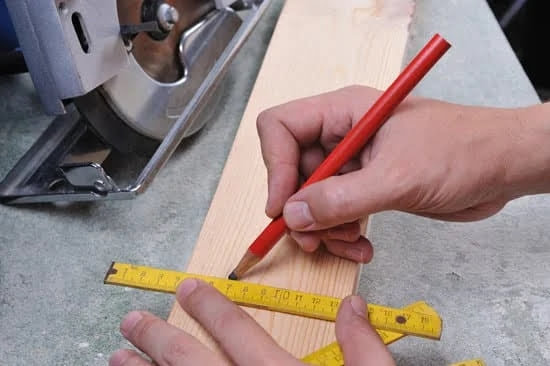Woodworking has long been a cherished hobby for many, offering a creative outlet and the satisfaction of crafting something with your own hands. However, taking that passion outdoors to a patio brings an added level of enjoyment and inspiration. The question often arises: is it okay to woodwork in a patio? The answer lies in the countless benefits and opportunities that come with setting up a woodworking space outside.
There is a unique appeal to working amidst nature, with the fresh air and natural light enhancing the woodworking experience. Having a designated outdoor workspace not only allows for greater creativity but also provides a sense of freedom and relaxation that indoor workshops may lack. Whether you have a spacious patio or a cozy balcony, transforming it into a woodworking haven can elevate your craft to new heights.
In this article, we will delve into the advantages of woodworking in a patio, offering insights on what to consider before starting such a project. From essential tools and safety measures to maintaining woodwork in an outdoor setting, we will provide valuable tips and guidance to help you make the most of your patio workshop. So, grab your tools, step outside, and let’s explore the world of woodworking in the open air.
Benefits of Woodworking in a Patio
Woodworking in a patio offers numerous benefits that cater to both experienced craftsmen and beginners alike. One of the primary advantages is the opportunity to work in a natural and serene environment. Being surrounded by fresh air, natural light, and the sounds of nature can significantly enhance your woodworking experience. The peaceful ambiance of a patio can also contribute to improved focus and creativity, allowing you to fully immerse yourself in your projects.
Another benefit of having a designated outdoor workspace for woodworking is the abundance of space and ventilation it provides. Patios typically offer more room than indoor workshops, allowing you to comfortably maneuver larger pieces of wood and operate tools with ease. Additionally, the open-air setting helps to dissipate dust and fumes generated during woodworking, creating a healthier and more breathable environment for you to work in.
Furthermore, woodworking in a patio allows you to seamlessly blend your passion for crafting with leisure time spent outdoors. You can enjoy the dual benefits of engaging in a productive hobby while soaking up the sun or savoring the cool breeze. This integration of work and relaxation not only enhances your overall well-being but also makes woodworking more enjoyable and fulfilling.
Whether you are pursuing woodworking as a hobby or a profession, utilizing your patio as a workspace can elevate your craftsmanship to new heights. So, is it okay to woodwork in a patio? Absolutely – as long as you take appropriate precautions and make thoughtful considerations before embarking on your creative journey outside.
Considerations Before Starting
Working on woodworking projects can be a fulfilling and creative way to spend your time. The idea of setting up a woodworking space in your patio can be appealing, as it allows you to enjoy the fresh air and natural surroundings while working on your projects. However, before you start transforming your patio into a woodworking haven, there are some important considerations to keep in mind.
First and foremost, you’ll need to think about the space available in your patio. Make sure that you have enough room to accommodate your tools, materials, and workbench comfortably. It’s important to have sufficient space to move around and work safely without feeling cramped or restricted.
Another consideration is the weather conditions in your area. Since your patio woodworking area will be exposed to the elements, you’ll need to think about how rain, wind, or extreme temperatures might affect your projects and materials. Consider investing in outdoor-friendly materials and equipment that can withstand different weather conditions.
Additionally, noise levels may be a concern when woodworking in a patio, especially if you live in a residential area. Be mindful of how noisy power tools could disturb neighbors or household members. You may need to establish specific working hours or use quieter hand tools to minimize noise pollution. Overall, taking these factors into account will help ensure that your patio woodworking setup is both enjoyable and practical.
| Consideration | Importance |
|---|---|
| Space Availability | Crucial for safety and comfort during work |
| Weather Conditions | Affects choice of materials and equipment |
| Noise Levels | Consideration for neighbors and household members |
Tools and Equipment
Woodworking in a patio can be a fulfilling and enjoyable experience for many enthusiasts. However, to ensure that your projects turn out as desired, it is essential to have the right tools and equipment at your disposal. Here are some essential tools and equipment needed for woodworking in a patio:
- Power Tools: Power tools can make woodworking tasks more efficient and accurate. Some essential power tools for woodworking in a patio include a circular saw, jigsaw, drill, orbital sander, and router.
- Hand Tools: Hand tools are equally important for fine-tuning and intricate details in woodworking projects. Make sure to have a set of chisels, mallets, hand saws, clamps, levels, measuring tape, and sandpaper.
- Workbench: A sturdy workbench is crucial for providing a stable surface to work on your projects. Consider investing in a portable or foldable workbench that can be easily stored when not in use.
- Storage Solutions: Organizing your tools and materials is key to maintaining an efficient workspace. Utilize toolboxes, shelves, bins, or pegboards to keep everything within reach.
Having the right tools and equipment not only enhances the quality of your woodworking projects but also ensures safety and efficiency in your patio workshop. Whether you are a beginner or experienced woodworker, having these essentials will set you up for success in creating beautiful pieces outdoors. Remember to prioritize quality over quantity when building up your collection of woodworking tools”.
Safety Measures
Woodworking in a patio can be a rewarding experience, allowing you to enjoy the fresh air and natural surroundings while pursuing your passion for creating beautiful wood pieces. However, ensuring safety should always be a top priority to prevent accidents and injuries. Here are some important safety measures to keep in mind when working with wood in an outdoor environment:
- Wear appropriate safety gear: Always wear protective gear such as goggles, gloves, ear protection, and a dust mask to safeguard yourself from potential hazards like flying wood chips, splinters, loud noise, and sawdust.
- Check weather conditions: Be mindful of the weather before starting your woodworking projects outdoors. Avoid working during rainy or windy conditions that could make the workspace unsafe or compromise the quality of your work.
- Keep your workspace organized: Maintain a clean and clutter-free patio workshop to prevent tripping hazards. Store tools properly when not in use and ensure electrical cords are safely tucked away to avoid accidents.
In addition to these safety measures, it is essential to familiarize yourself with the proper operation of woodworking tools and equipment to minimize risks. Regularly inspect your tools for any damage or wear and tear, and follow manufacturer instructions for safe usage. Remember that taking precautions is key to creating a safe and enjoyable woodworking experience in your patio.
- Learn proper tool handling techniques: Before using any woodworking tool in your patio workshop, make sure you understand how it functions and how to operate it safely. Practice good hand positioning and cutting techniques to reduce the risk of accidents.
- Maintain a first aid kit nearby: Accidents can happen even with the best precautions in place. Keep a well-stocked first aid kit within reach of your patio workspace so that you can quickly address minor injuries like cuts or scrapes.
- Stay focused on the task at hand: Distractions can lead to mistakes or accidents while working with wood. Avoid using power tools when tired or under the influence of substances that may impair judgment. Stay present and focused on your projects for optimal safety.
By following these safety measures and guidelines, you can create a secure environment for woodworking in your patio while enjoying the many benefits of working outdoors. Remember that prioritizing safety not only protects you but also enhances your overall woodworking experience.
Maintaining Woodwork in a Patio
Woodworking in a patio can be an enjoyable and fulfilling experience, allowing you to connect with nature while working on your projects. However, one crucial aspect to consider when woodworking outdoors is how to maintain and protect your creations from the elements. To ensure the longevity and durability of your woodwork in a patio setting, here are some tips to keep in mind:
1. Sealant and Finishes: One of the most important steps in maintaining outdoor woodwork is applying a high-quality sealant or finish. This will help protect the wood from moisture, UV rays, and other environmental factors that can cause damage over time. Be sure to choose a product specifically designed for outdoor use and follow the manufacturer’s instructions for application.
2. Regular Cleaning: To prevent dirt, dust, and debris from accumulating on your woodworking projects, make it a habit to regularly clean them with a mild detergent and water. Avoid using harsh chemical cleaners that could potentially damage the wood or finishes. A gentle scrubbing with a soft brush or cloth should suffice.
3. Covering or Storing: If possible, consider covering your woodwork when not in use or storing it indoors during inclement weather conditions. This will provide additional protection against rain, snow, or excessive sun exposure that could warp or discolor the wood. Investing in custom-fitted covers or storage solutions is a wise choice for preserving your creations.
| Maintaining Tips | Benefits |
|---|---|
| Apply sealant and finishes | Protects wood from moisture and UV rays |
| Regular cleaning | Prevents dirt accumulation |
| Covering or storing | Protection against inclement weather |
Design Inspiration
Woodworking in a patio offers a unique opportunity to connect with nature while engaging in a fulfilling and creative activity. Whether you are a seasoned woodworker or just starting out, the outdoor setting can provide inspiration for your projects. From rustic furniture to elegant garden accents, the possibilities are endless when it comes to patio woodworking projects.
Outdoor Furniture
One popular category of patio woodworking projects is outdoor furniture. Creating tables, chairs, benches, and loungers can not only enhance the aesthetic appeal of your patio but also provide functional and comfortable seating options for outdoor gatherings. Using durable wood species like cedar or teak can ensure that your furniture withstands the elements and remains beautiful for years to come.
Garden Planters and Trellises
Another creative avenue for patio woodworking projects is designing and crafting garden planters and trellises. These pieces can add vertical interest to your outdoor space while providing a suitable environment for plants to thrive. Consider incorporating lattice work or intricate designs into your woodworking projects to elevate the visual appeal of your garden.
Decorative Accents
In addition to larger projects, smaller decorative accents can also make a big impact in your patio space. Consider creating wooden lanterns, birdhouses, or hanging plant holders to infuse personality and charm into your outdoor oasis. These smaller-scale projects allow you to experiment with different techniques and designs while adding a personal touch to your patio decor.
Overall, woodworking in a patio opens up a world of design possibilities and creative opportunities. Whether you prefer modern minimalist aesthetics or rustic charm, there is no limit to what you can achieve with woodworking in an outdoor setting. So go ahead, gather some inspiration from nature, roll up your sleeves, and start creating beautiful pieces that not only enhance your patio but also bring joy and satisfaction through the art of woodworking.
Success Stories
Woodworking in a patio is not only a feasible option but also an exciting one, as many individuals have successfully created stunning pieces in their outdoor workspace. One such success story is that of Sarah, who transformed her modest patio into a woodworking haven.
With just a few basic tools and some creativity, she built custom furniture pieces that not only beautified her outdoor space but also provided functional utility. The natural light and fresh air from the patio added to the overall experience, making woodworking a true pleasure for her.
Another inspiring example is Mike, who turned his passion for woodworking into a thriving business right from his own patio workshop. Starting with small projects like birdhouses and planters, Mike gradually expanded his repertoire to include custom-made tables and cabinets. His patio setup allowed him to work on larger pieces without feeling constrained by limited space. Through dedication and commitment, Mike’s craftsmanship caught the eye of local customers and led to numerous commissions for bespoke woodwork items.
For Mark, a hobbyist woodworker, setting up a space in his patio meant being able to pursue his passion while enjoying the tranquility of nature. The rhythmic sounds of chirping birds and rustling leaves served as background music to his creative process.
Mark took advantage of the versatility of working outdoors by experimenting with different finishes and techniques that complemented the natural elements around him. The peaceful ambiance of his patio contributed to an enhanced woodworking experience that truly reflected his love for the craft.
These success stories showcase how woodworkers can thrive in a patio workshop environment, turning their passion into tangible results. With dedication, creativity, and attention to detail, individuals can harness the benefits of working outdoors while creating beautiful pieces that resonate with both functionality and artistry. Woodworking in a patio not only allows for personal expression but also opens up opportunities for growth and fulfillment in the world of craftsmanship.
Conclusion
In conclusion, woodworking in a patio offers numerous benefits that can enhance your crafting experience. The appeal of working outdoors, surrounded by the beauty of nature, is undeniable for many woodworkers. Having a designated outdoor workspace not only allows for more space and ventilation but also provides a relaxing and inspiring environment to unleash creativity.
Before starting your patio woodworking journey, it is important to consider factors such as weather protection, storage solutions, and neighborhood noise regulations. By taking these considerations into account and investing in the necessary tools and equipment, you can create a functional and enjoyable outdoor workshop.
While safety measures should always be a top priority when working with wood, especially in an outdoor setting where potential hazards may arise, maintaining your woodwork in a patio is key to preserving its beauty and longevity. By following proper maintenance tips and design inspiration for patio projects, you can successfully create stunning pieces while enjoying the unique experience of woodworking amidst the elements.
So, to answer the question posed in the title – yes, it is definitely okay to woodwork in a patio as long as you are prepared, safe, and inspired by your surroundings.

Hi everyone! I’m a woodworker and blogger, and this is my woodworking blog. In my blog, I share tips and tricks for woodworkers of all skill levels, as well as project ideas that you can try yourself.





